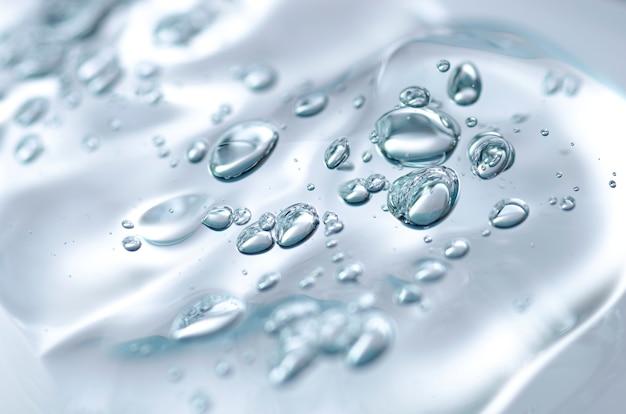Welcome to our blog post on the popular skincare topics of lactic acid and retinol! If you’re a skincare enthusiast, you’ve probably come across these two ingredients and wondered if they can be used together. Well, you’re in the right place because today we’re going to dive into the question: Can You Mix Lactic Acid And Retinol?
Skincare routines can be overwhelming, especially with the abundance of products available, each claiming to work wonders for your skin. It’s not uncommon to have questions like, “Can I use lactic acid everyday?” or “What can you not mix with retinol?” In this comprehensive guide, we’ll not only answer those questions but also explore how lactic acid and retinol can be used together, what to pair them with, and what skincare ingredients they should not be combined with.
So, whether you’re a skincare beginner or a seasoned enthusiast, sit back, relax, and let’s find out the perfect way to incorporate lactic acid and retinol into your skincare routine for healthier-looking skin.
Can You Mix Lactic Acid And Retinol
So, you’ve come across the buzz around lactic acid and retinol, and now you’re wondering if you can mix these two skincare superheroes together. Well, hold on tight, because we’re about to dive into the world of chemistry and reveal the answer!
Understanding the Chemistry Behind Lactic Acid and Retinol
Before we jump into the mixing game, let’s quickly understand what lactic acid and retinol do separately. Lactic acid, derived from milk or produced synthetically, is a gentle exfoliant renowned for its ability to slough away dead skin cells, leaving you with a radiant complexion. On the other hand, retinol, a derivative of vitamin A, is hailed as the holy grail of anti-aging, reducing fine lines, wrinkles, and boosting collagen production.
The Clash of the Titans: Lactic Acid vs. Retinol
Now you might be thinking, “If both lactic acid and retinol are fantastic for my skin, why not combine them for maximum benefits?” Well, here’s where things get a little complicated. Lactic acid is an alpha-hydroxy acid (AHA), while retinol is a member of the retinoid family. Both of these rockstars can be a bit demanding, and combining them without caution could lead to skin irritation and dryness. We want your skin to glow, not resemble a dull, dry, and irritated desert!
Proceed with Caution: Mixing Lactic Acid and Retinol
While it’s not recommended to mix lactic acid and retinol directly on your skin at the same time, there are ways to reap the benefits of both without causing havoc. The key lies in alternating their usage. For instance, you can incorporate lactic acid into your nighttime routine twice a week, giving your skin a gentle exfoliation and allowing it to regenerate overnight. On the remaining days, you can indulge in the wonders of retinol, paving the way for collagen-boosted, age-defying skin.
The Power of Patch Testing
Remember, even when you’re alternating these superstar ingredients, it’s crucial to patch test each of them individually before incorporating them into your routine. Patch testing helps identify any potential adverse reactions, ensuring your skin stays happy and healthy. Apply a small amount of each product on separate areas of your skin and observe for any redness, itching, or irritation. Safety first, my friend!
Consult a Skincare Expert
If you’re still uncertain about mixing lactic acid and retinol or have specific skin concerns, it’s always wise to consult a skincare expert. They can assess your skin type, understand your goals, and provide tailored advice suitable for your unique circumstances. Plus, they’re like the superheroes of the skincare world, armed with knowledge and experience to guide you on your path to radiant skin.
In Summary
While lactic acid and retinol individually work wonders for your skin, it’s best to keep them on separate skincare tracks. Incorporate lactic acid into your routine a few times a week and let retinol take center stage on the other days. Remember to patch test, listen to your skin, and consult a skincare expert if you need further guidance. Now, armed with this knowledge, go forth and conquer your skincare journey with a radiant smile!
FAQ: Can You Mix Lactic Acid and Retinol
Welcome to our comprehensive FAQ on the topic of mixing lactic acid and retinol in your skincare routine. In this section, we will address some commonly asked questions to help you make informed decisions about incorporating these two powerhouse ingredients into your regimen. So, let’s dive right in!
Can I Use Lactic Acid Every Day
Using lactic acid every day can be a bit intense for some skin types. While it can provide excellent exfoliation and promote a brighter complexion, overdoing it can lead to irritation and dryness. Start by using lactic acid a few times a week and gradually increase frequency if your skin tolerates it well. Always listen to your skin, it’s the boss!
What Can You Not Mix with Retinol
Retinol doesn’t play well with a few ingredients, so avoid teaming it up with exfoliating acids like lactic acid, glycolic acid, or salicylic acid. These combinations may cause unnecessary irritation and sensitization. Instead, save the retinol party for its own special night and let it shine all on its own.
Can I Mix Lactic Acid with Buffet
Buffet, not the all-you-can-eat kind, is a peptide-packed serum that can work wonders for your skin. Luckily, it plays well with lactic acid! Just make sure to apply the lactic acid first, allowing it some solo time to do its magic, and then follow up with your beloved Buffet.
Which Is More Important: Vitamin C or Retinol
Ah, the age-old battle of the skincare behemoths! Both vitamin C and retinol bring unique benefits to the table. Vitamin C is a master at brightening and evening out skin tone, while retinol takes center stage in the anti-aging arena. Why not give both of these superheroes a chance to work their magic? Alternate their use or find products that already combine them, and let your skin reap the benefits.
How Do You Use Retinol and Lactic Acid
Timing is everything when it comes to using retinol and lactic acid together. To avoid any potential irritation, apply lactic acid in your evening routine, followed by a gentle moisturizer. Give it some time to settle in, and then embrace the power of retinol in a separate skincare session. This way, they won’t clash or compete, and your skin will be happy.
What Can You Pair with Retinol
Retinol loves to mingle with some good company! It plays well with hydrating ingredients like hyaluronic acid or emollient-rich creams. So, feel free to introduce these moisturizing sidekicks into your retinol routine. Your skin will thank you for the extra nourishment and hydration.
What Skincare Should Not Be Used Together
Sometimes, skincare ingredients just don’t vibe well together. To avoid sending your skin into a frenzy, keep the following pairs apart: retinol and exfoliating acids, retinol and benzoyl peroxide, and retinol and vitamin C. Give each ingredient their spotlight moment, and your skin will stay harmonious.
What Can You Not Mix with Lactic Acid
While lactic acid can work wonders, it’s important to give it the right setting to shine. Avoid pairing it with harsh physical exfoliants or other chemical exfoliants like salicylic acid or glycolic acid. These combinations can be too much for your skin to handle, and we want to keep it happy and healthy!
What Should You Not Use Hyaluronic Acid With
Friendly reminder: hyaluronic acid is a hydration superhero, but like any superhero, it has its boundaries. To prevent disappointment, avoid using hyaluronic acid with products containing drying alcohols. These can counteract the hydrating effects, leaving your skin feeling less plump and more parched. Let’s keep that hydration game strong!
How Do You Know If Retinol is Working
The suspense is real when it comes to gauging retinol’s impact on your skin. But fear not! Look out for telltale signs such as improved skin texture, minimized fine lines, and a radiant complexion. Just remember, patience is key. Rome wasn’t built in a day, and your skin transformation will take time too. Keep the faith!
Should I Use Lactic Acid or Hyaluronic Acid First
When it comes to the skincare “first dance,” it’s best to let lactic acid take the lead. Start with lactic acid, which gently exfoliates and preps your skin for other products, and then let hyaluronic acid step in to deliver its hydrating goodness. It’s like a beautiful skincare waltz that leaves your skin glowing!
Should I Use Hyaluronic Acid Before or After Retinol
Hyaluronic acid doesn’t like to disrupt retinol’s star performance, so give it a backstage pass. Apply hyaluronic acid before retinol in your skincare routine. This way, it can create a hydrating cushion, ensuring your skin stays plump and happy while retinol works its anti-aging magic.
Can You Put Lactic Acid on Pimples
Lactic acid can be a gentle ally in your battle against pimples, but proceed with caution. Apply lactic acid as a spot treatment directly on the pimple, rather than slathering it all over your face. This targeted approach will help exfoliate the pimple gently and encourage a speedier recovery.
How Long Should You Wait to Apply Moisturizer After Retinol
Patience is not only a virtue; it’s also important when using retinol. After applying retinol, wait a few minutes (around 10-15) to allow it to absorb fully into your skin. Once it’s settled in, follow up with a dose of moisturizer to keep your skin hydrated and happy throughout the night. Your skin will thank you!
What Can You Combine with Lactic Acid
Lactic acid loves a good skincare combo! It plays well with gentle cleansers, soothing moisturizers, and of course, SPF during the day. These harmonious partnerships will help balance and protect your skin, while lactic acid gently exfoliates and reveals your naturally radiant complexion.
Which Is Better: Hyaluronic Acid or Retinol
Ah, the classic “pick one” conundrum. The truth is, hyaluronic acid and retinol serve different purposes. Hyaluronic acid is a hydration superhero, while retinol is the anti-aging ace. It’s not about choosing one over the other; it’s about finding harmony and incorporating both into your skincare routine. Let them each shine in their own spectacular ways!
Does Retinol Go on Before or After Moisturizer
Retinol likes to get down to business, so apply it before your moisturizer. This allows it to penetrate properly and work its magic on your skin. Just make sure your skin is clean and dry before applying retinol, and remember to wait a few minutes before following up with your moisturizer. Let the “retinol revolution” begin!
Can I Use Lactic Acid and Retinol at Night
Absolutely, but make sure to give them their own solo performances! Apply lactic acid first, giving it time to do its exfoliating magic and then, in a separate act, let retinol take the stage. This way, both ingredients can work effectively without competing for the spotlight. Get ready to wake up to fabulous skin!
That wraps up our comprehensive FAQ on mixing lactic acid and retinol like a boss! With these answers in hand, you can confidently navigate your skincare journey and achieve skin that’s truly worthy of the red carpet. Remember, it’s all about finding what works for you and treating your skin with love and respect. Now go forth and bring your skincare A-game!

